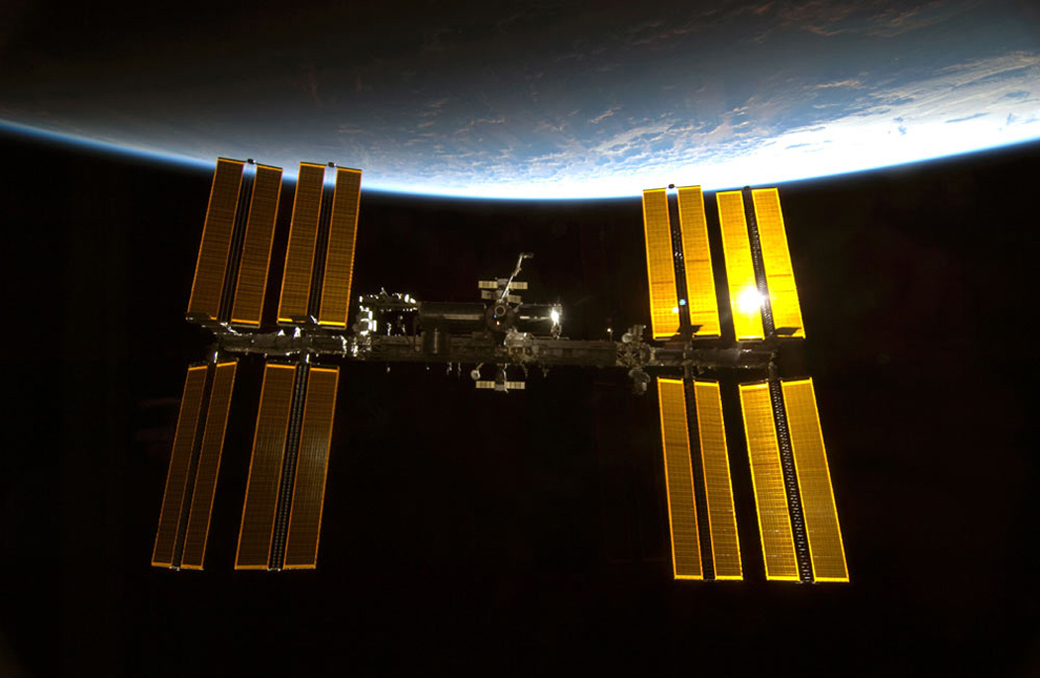NASA Tracking Space Junk Near International Space Station

NASA is keeping a close eye on two pieces of space junk expected to whiz by the International Space Station in back-to-back passes, and the station may even have to dodge the orbital debris.
The drifting space flotsam includes the remains of a Russian Cosmos satellite and a leftover chunk of an old Indian rocket. The Russian satellite debris will creep close to the space station on Thursday morning (Sept. 27), with the Indian rocket remnant zooming by on Friday, NASA officials told SPACE.com.
As a precaution, NASA and its Russian partners began planning for a possible "debris avoidance maneuver" on Thursday morning that would steer the station clear of both pieces of space debris. The maneuver, if ultimately required, would fire the thrusters on a European cargo ship currently docked at the station for just over two minutes to move the station clear of the space junk.
NASA and its partners traditionally order a debris avoidance maneuver when a piece of space junk is expected to pass so close that it enters a safety perimeter shaped like a pizza box that extends just over 15 miles (25 kilometers) around the space station, and a half-mile (0.75 km) above and below the orbiting lab. [Space Junk Photos & Cleanup Concepts]
NASA spokesman Rob Navias of the Johnson Space Center, home to the agency's space station Mission Control center, told SPACE.com the two space debris fragments being tracked now will come just inside that safety zone.
Navias said the avoidance maneuver would be performed at 8:12 a.m. EDT (1218 GMT) on Thursday, if ultimately required. It is possible that additional tracking of the space junk may allow station flight controllers to call off the maneuver, he added.
The Russian satellite debris will make its closest approach to the space station on Thursday at 10:42 a.m. EDT (1432 GMT), with the Indian rocket debris passing by on Friday at 1:47 a.m. EDT (0547 GMT), he added.
Get the Space.com Newsletter
Breaking space news, the latest updates on rocket launches, skywatching events and more!
At no time will the station's three-person Expedition 33 crew be in danger, NASA officials said. The station is currently home to NASA astronaut Sunita Williams, Japanese astronaut Akihiko Hoshide and Russian cosmonaut Yuri Malenchenko.
Space junk has been a growing threat for astronauts living on the International Space Station, as well as other satellites in orbit. NASA and the U.S. military's Space Surveillance Network track about 20,000 pieces of space debris in orbit today.
The potential for Thursday's space debris avoidance maneuvers has forced station flight controllers to delay the departure of the European cargo ship that will perform the engine burn — the Automated Transfer Vehicle 3 (ATV-3) — by at least one day. The unmanned spacecraft was originally scheduled to leave the space station on Wednesday (Sept. 25), but a minor computer glitch delayed its undocking.
The next chance for the ATV-3 spacecraft to undock will be Friday afternoon, Navias said.
You can follow SPACE.com Managing Editor Tariq Malik on Twitter @tariqjmalik. Follow SPACE.com @Spacedotcom. We're also on Facebook & Google+.
Join our Space Forums to keep talking space on the latest missions, night sky and more! And if you have a news tip, correction or comment, let us know at: community@space.com.

Tariq is the Editor-in-Chief of Space.com and joined the team in 2001, first as an intern and staff writer, and later as an editor. He covers human spaceflight, exploration and space science, as well as skywatching and entertainment. He became Space.com's Managing Editor in 2009 and Editor-in-Chief in 2019. Before joining Space.com, Tariq was a staff reporter for The Los Angeles Times covering education and city beats in La Habra, Fullerton and Huntington Beach. In October 2022, Tariq received the Harry Kolcum Award for excellence in space reporting from the National Space Club Florida Committee. He is also an Eagle Scout (yes, he has the Space Exploration merit badge) and went to Space Camp four times as a kid and a fifth time as an adult. He has journalism degrees from the University of Southern California and New York University. You can find Tariq at Space.com and as the co-host to the This Week In Space podcast with space historian Rod Pyle on the TWiT network. To see his latest project, you can follow Tariq on Twitter @tariqjmalik.









